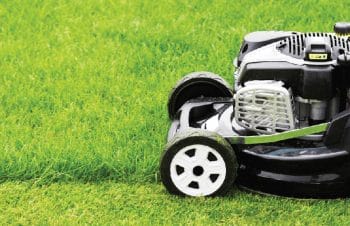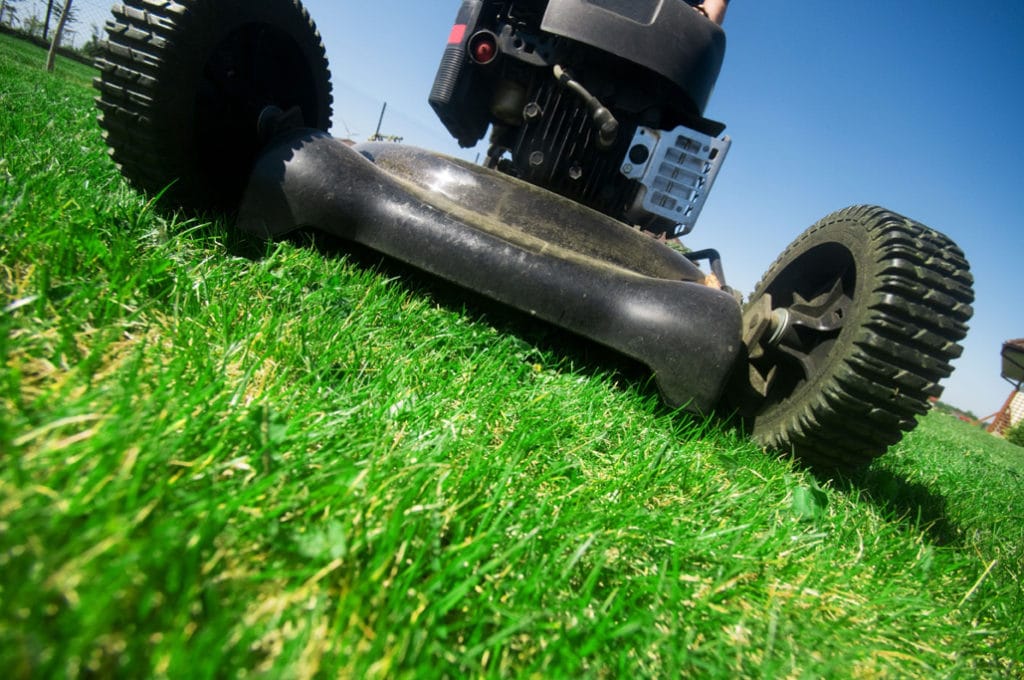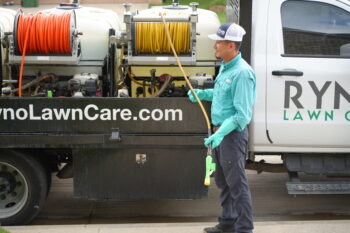 Most people opt for a weekly mowing schedule, and this is certainly what the majority of lawn care companies offer. However, there are a few factors to consider when determining how frequently you should mow your lawn, as well as how high or low you should set your mower blades.
Most people opt for a weekly mowing schedule, and this is certainly what the majority of lawn care companies offer. However, there are a few factors to consider when determining how frequently you should mow your lawn, as well as how high or low you should set your mower blades.
Click here to learn more about Ryno’s full service lawn care.
It isn’t quite as simple as saying, “mow weekly in the summer, and every other week during spring and fall.” Let’s take a look at some factors that weigh in on establishing an optimal mowing schedule.
The Basics
Grass should be kept longer in the summer months. This not only helps shade the crown of your grass bed and cool off the soil, but mowing less frequently also helps promote root growth.
You don’t want blades so long that they start to bow, however. That level of canopy over the ground can promote lawn disease by trapping excess moisture. Mowing blades that have begun to bow over can also result in an uneven cutting pattern.
You also want to consider how quickly your grass grows when determining how often to mow it. This may change from one season to the next, as grass grows more verdantly in times of plentiful sunlight and irrigation.
Most experts recommend only cutting about ⅓ of the blade length at a time. Regardless of the actual length of your grass, cutting more than this amount can damage the organism. That means, when it comes to choosing the right height, how often you mow will depend on how quickly your turfgrass is growing.
You always want to leave enough length on your grass blades to allow for adequate photosynthesis. If you cut your lawn short and it begins to yellow, this is a good sign that you may have removed too much length from the blades.
Mowing your lawn with good frequency encourages it to grow laterally, which increases its density. Left to its own devices, grass will grow upward, as the blades compete for optimal sunlight. But keeping it shorter encourages “sideways” growth via rhizomes and stolons, which produces a thicker grass bed that is less susceptible to weeds.
Most grasses need to be mowed the most in the summer, when their growth is most aggressive. Spring and fall mowing will depend largely on preferred grass height and shade coverage. Mowing in the winter is seldom necessary, unless your lawn gets a brief growth spurt due to a warm spell.
Grass Types
For most grass types, a good summer length is about 3 inches. However, this may vary a bit with some turfgrasses. For instance, both Zoysia and Bermuda grass can be kept to a length of around 1-2 inches.
Here are a few other considerations for the 3 most common grass types in North Texas:
Zoysia Grass
In early spring, it’s a good idea to mow your zoysia grass as short as possible. Again, you don’t want to scalp your lawn or remove more than ⅓ of the blades’ total length.
Getting it nice and short will encourage new growth by exposing the crown and topsoil to the season’s lengthening sunlight. Additionally, any small sticks and other debris will get broken down into a natural and nutrient-rich mulch.
Most experts recommend keeping zoysia grass at a length of about 1.5 inches in the summer, although some choose to let it grow to 2.5 inches. Allowing for longer grass blades is safer in the fall and in shaded areas of your yard, as it likely won’t grow as quickly.
Bermuda Grass
Bermuda grass is dense with fine blades, creating a wonderful carpet for bare feet and household pets. However, those fine grass blades must be met with sharp mower blades for a clean cut.
Many homeowners who have bermuda grass actually prefer a rotary mower, otherwise known as a reel mower, in order to achieve a healthy cut. This type of mower does a better job in accommodating the shorter length (1-1.5 inches) without scalping your lawn.
St. Augustine Grass
St. Augustine grass is another turfgrass that benefits from an early spring mowing. Most people allow their St. Augustine to stay at a height of 3-3.5 inches, but it’s best to cut it to 2-2.5 inches just before it greens up. As with the other grasses, this practice helps with new growth.
St. Augustine grass tends to be less drought resistant than the other two we’ve discussed. This means it may grow more slowly in times of infrequent watering. Once again, the rate at which your lawn grows, should be calculated into the frequency of your mowing schedule.






One Response
I tend to Mow my lawn every once in a while, but this post helped me further in making an informed decision. Thanks T. Stafford!